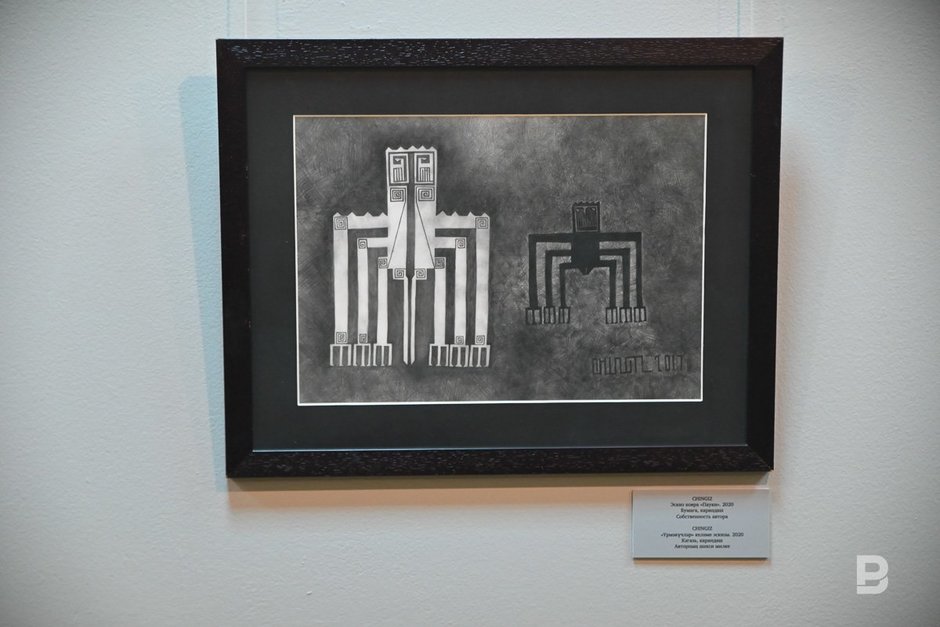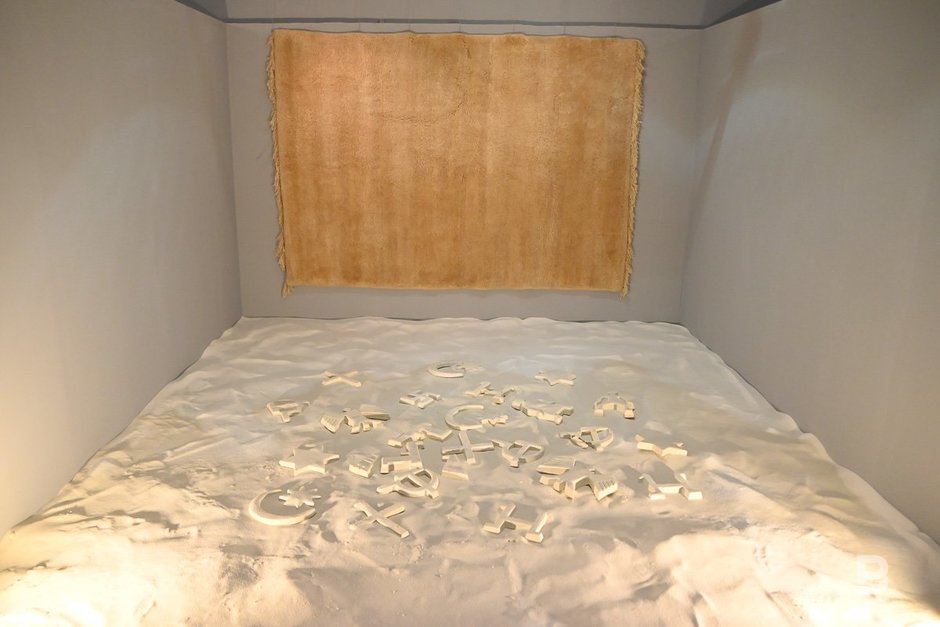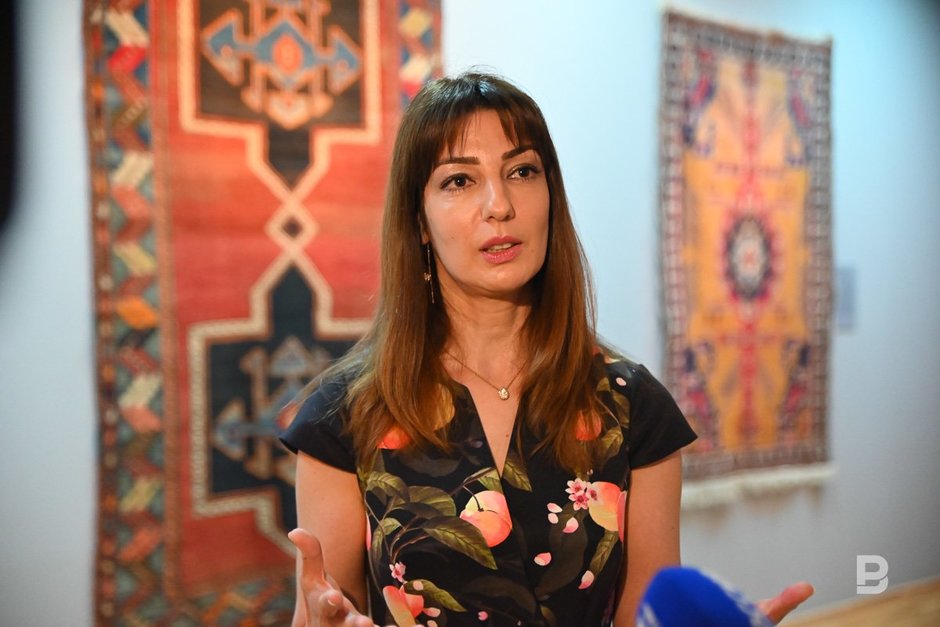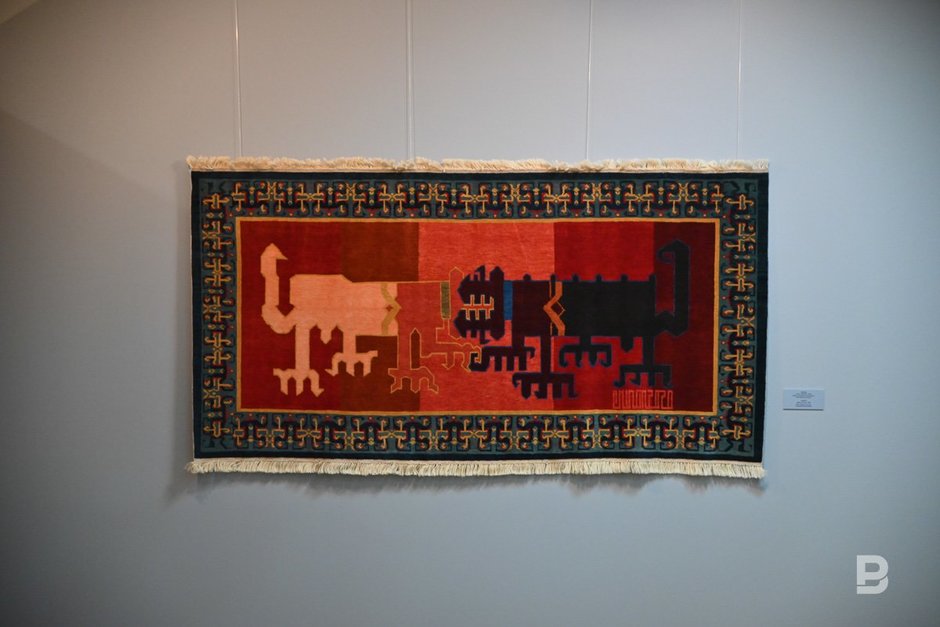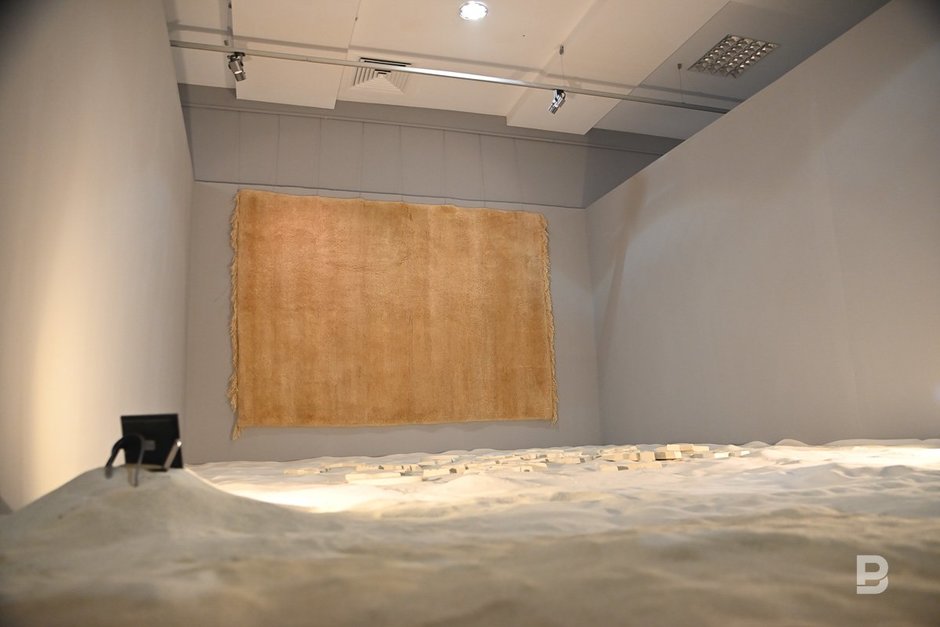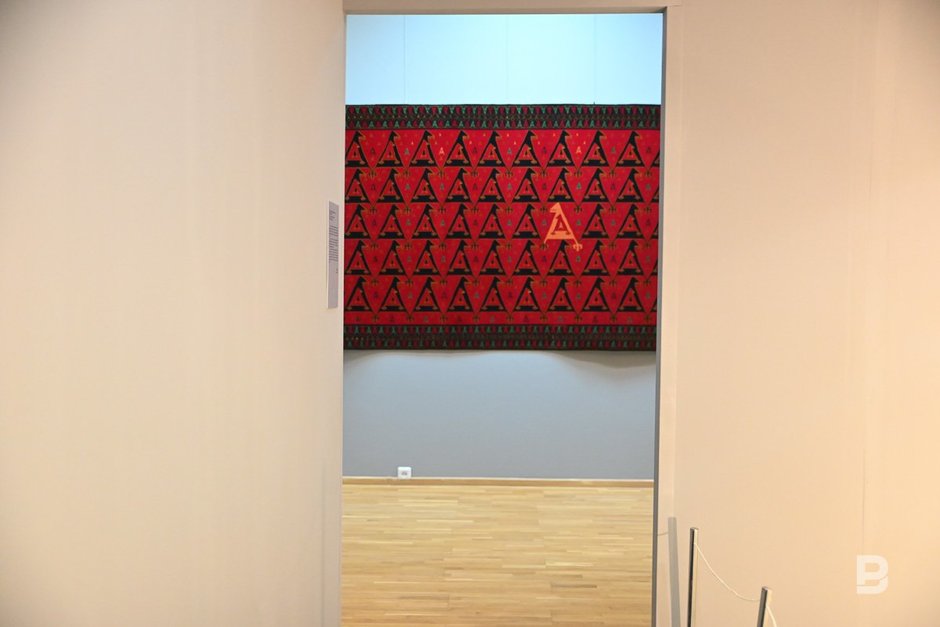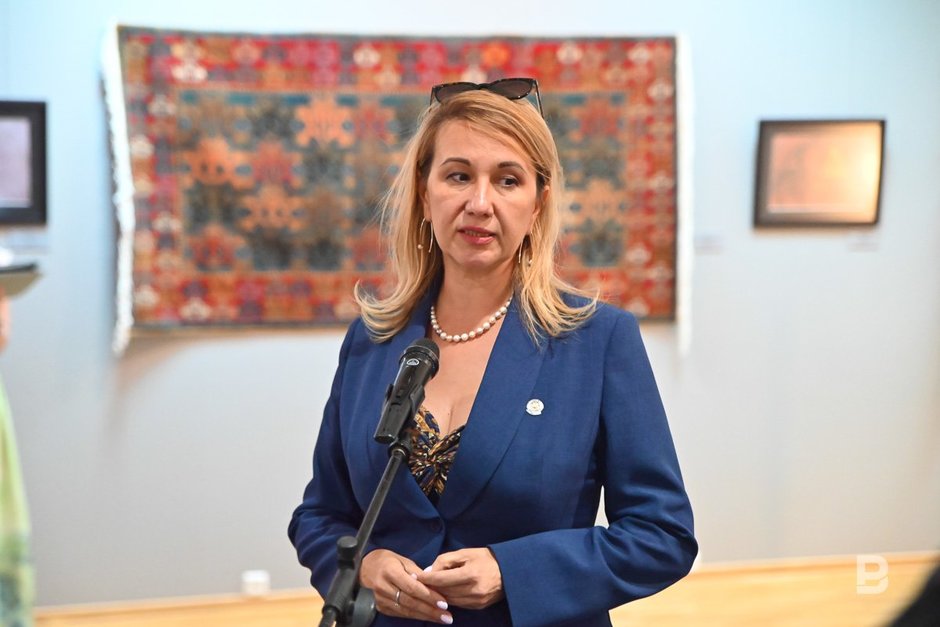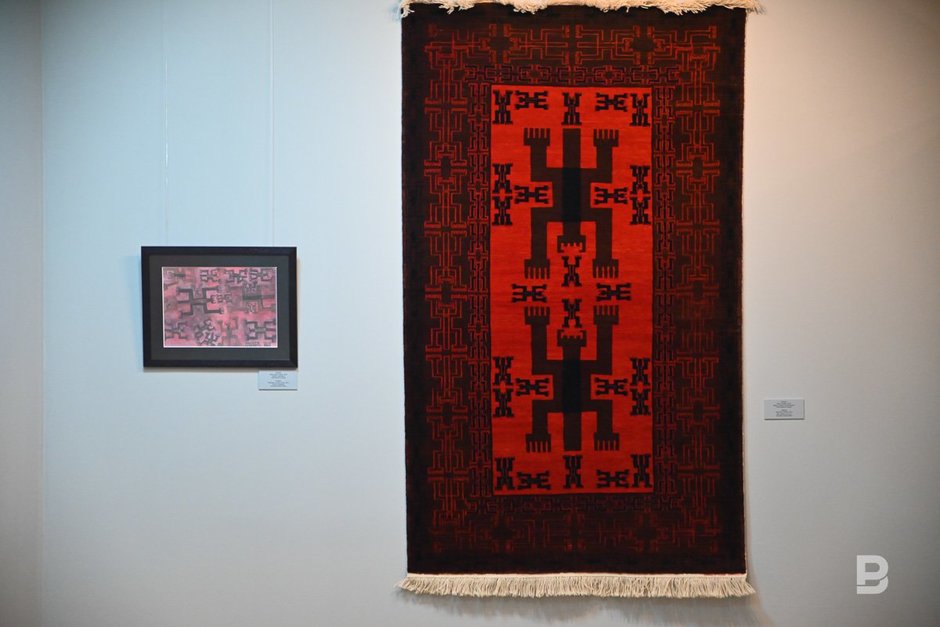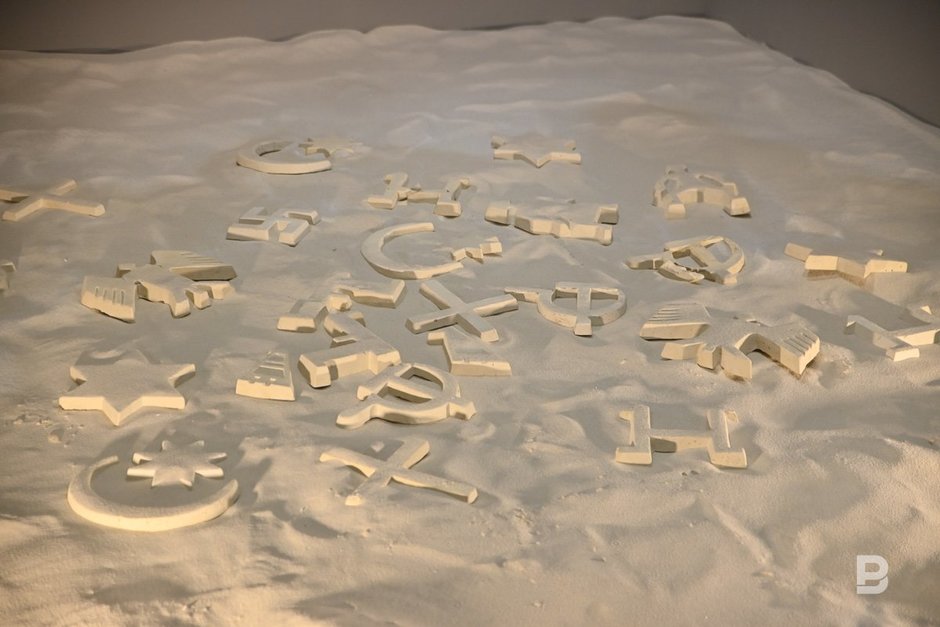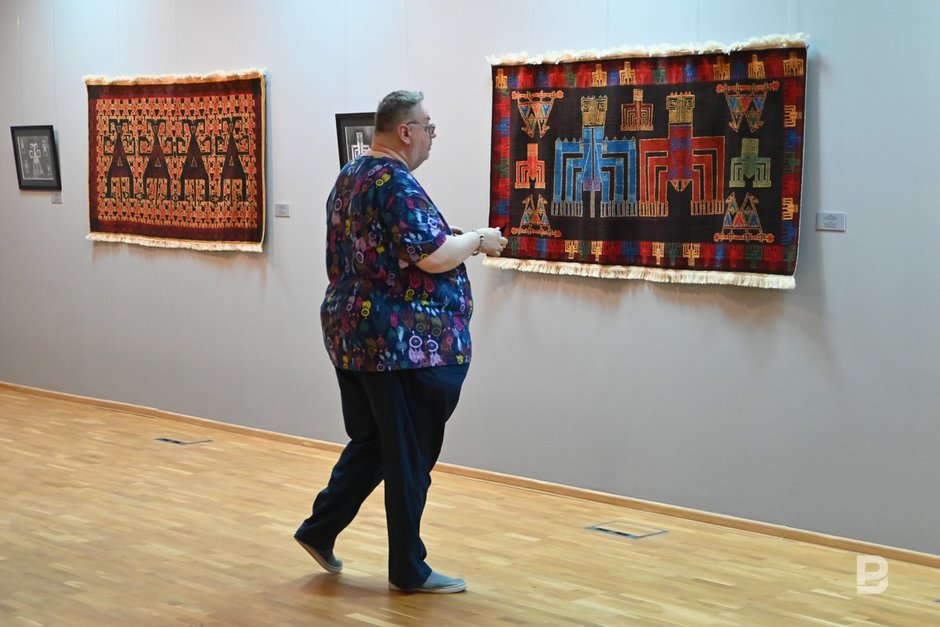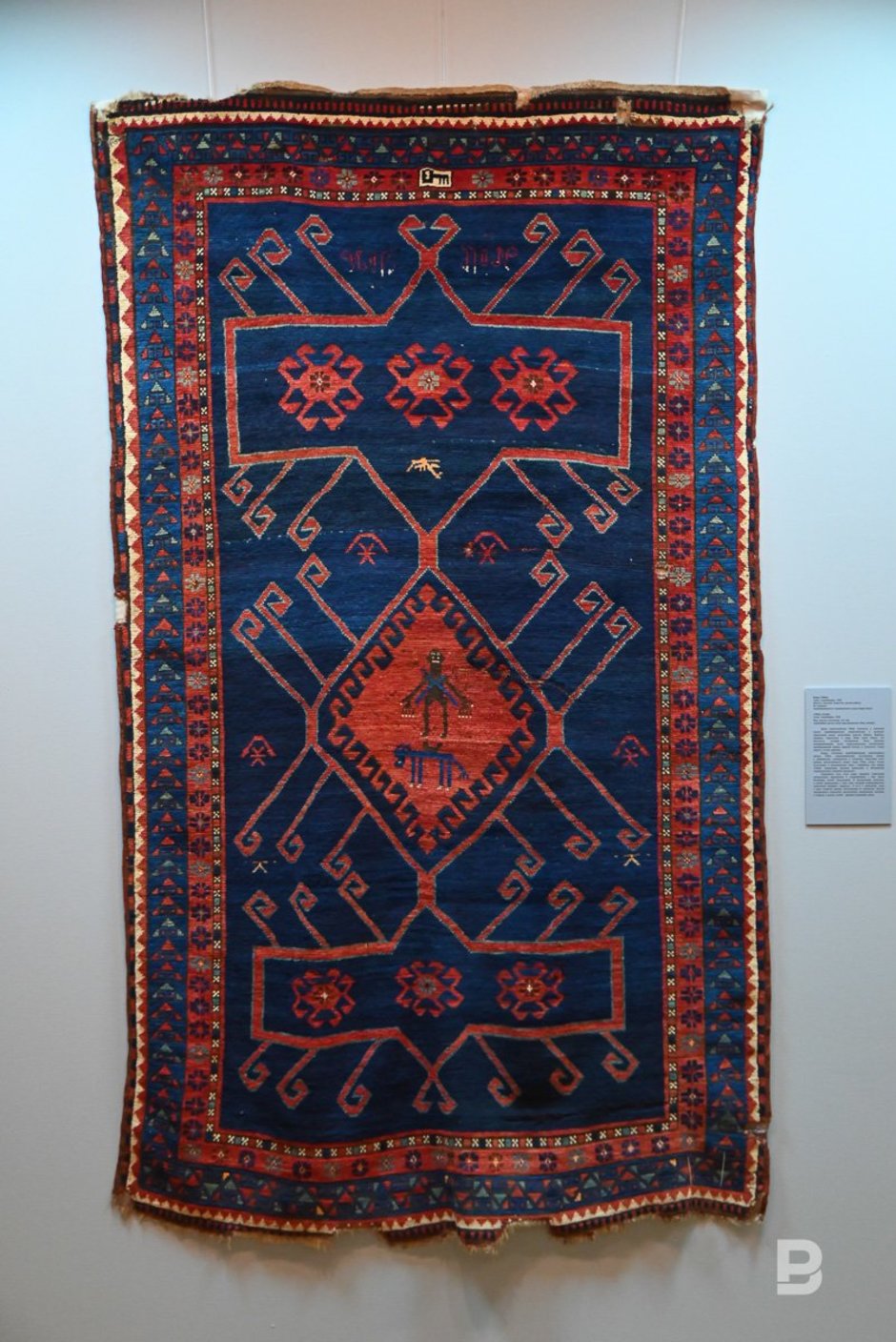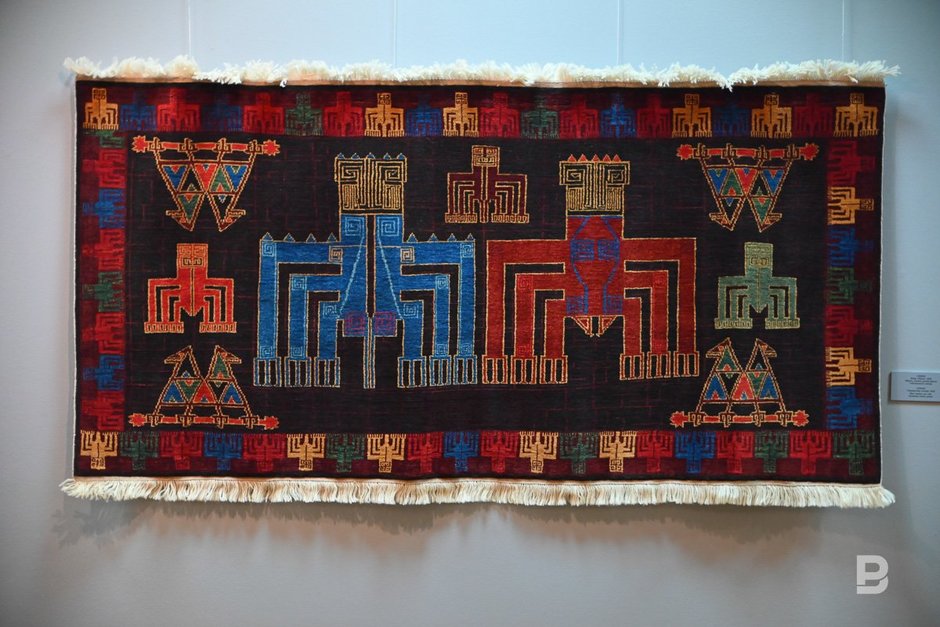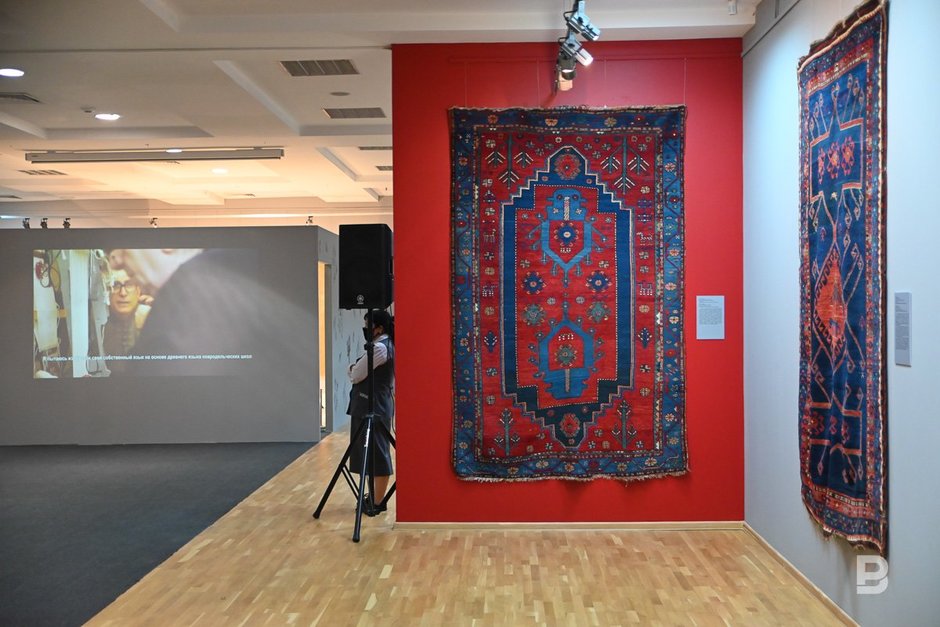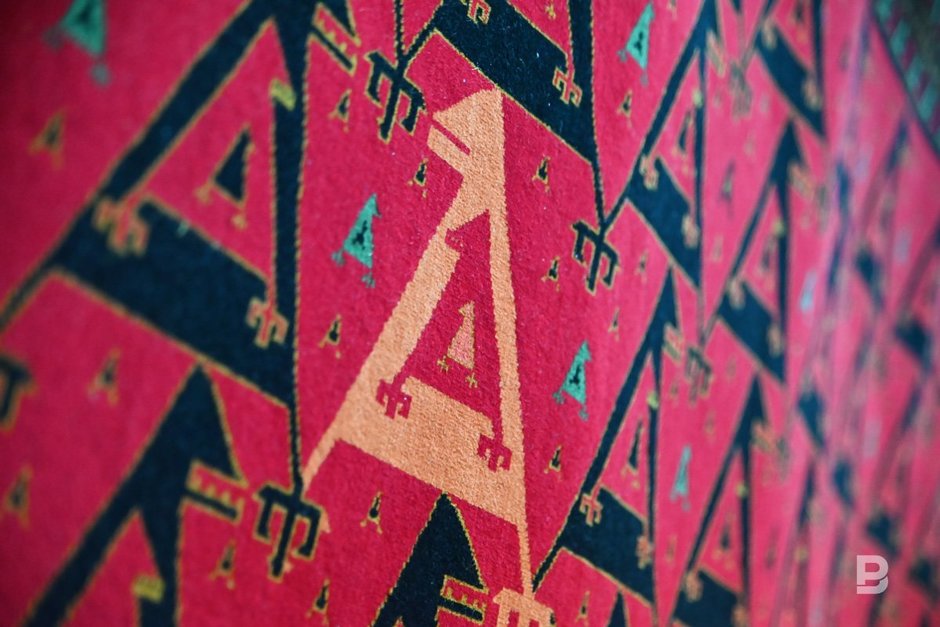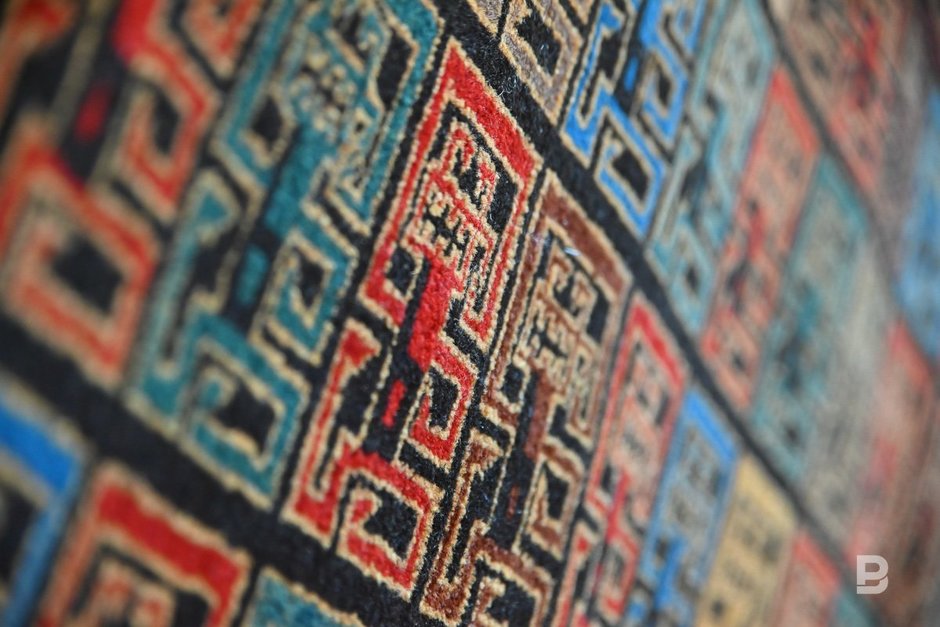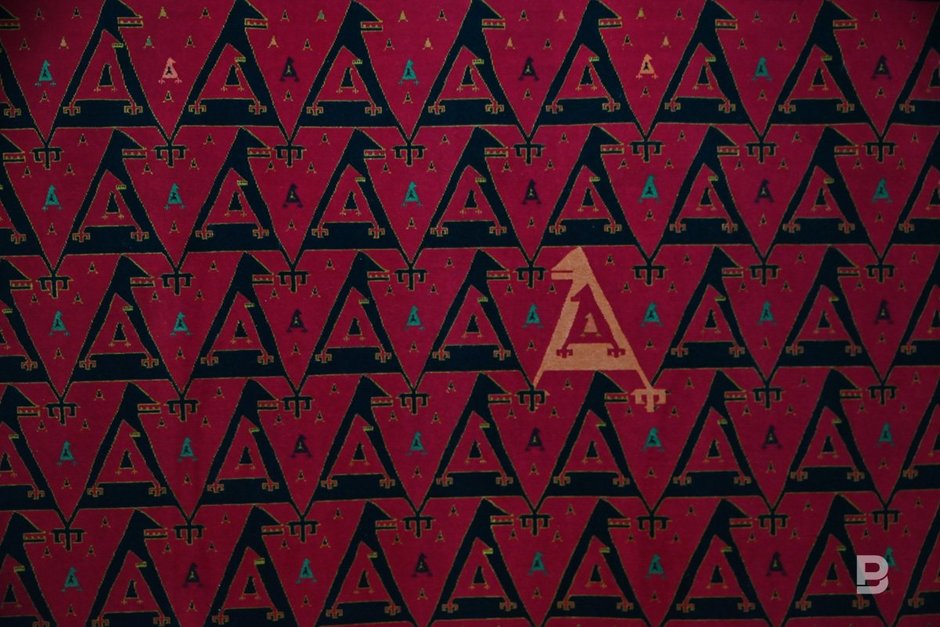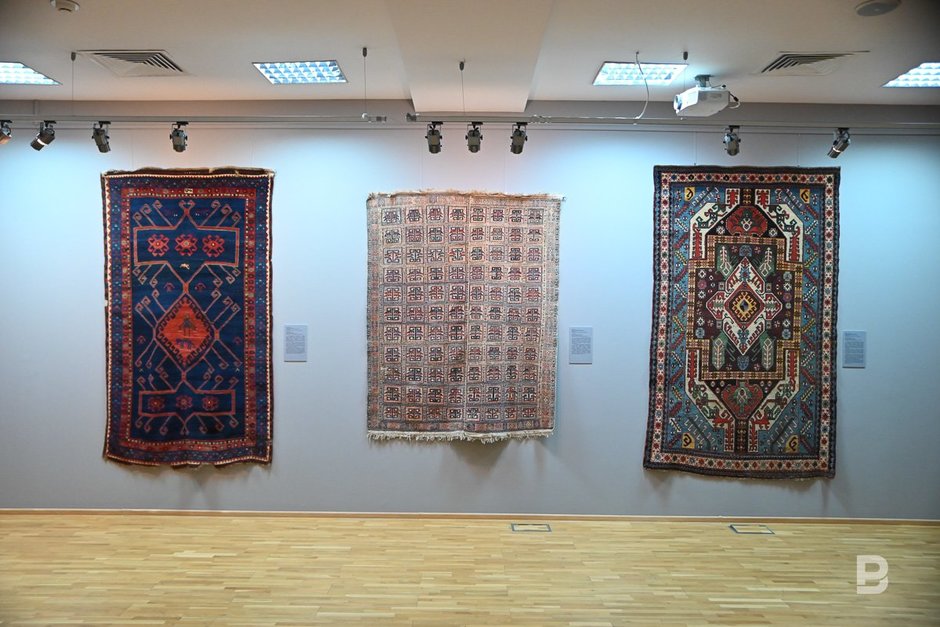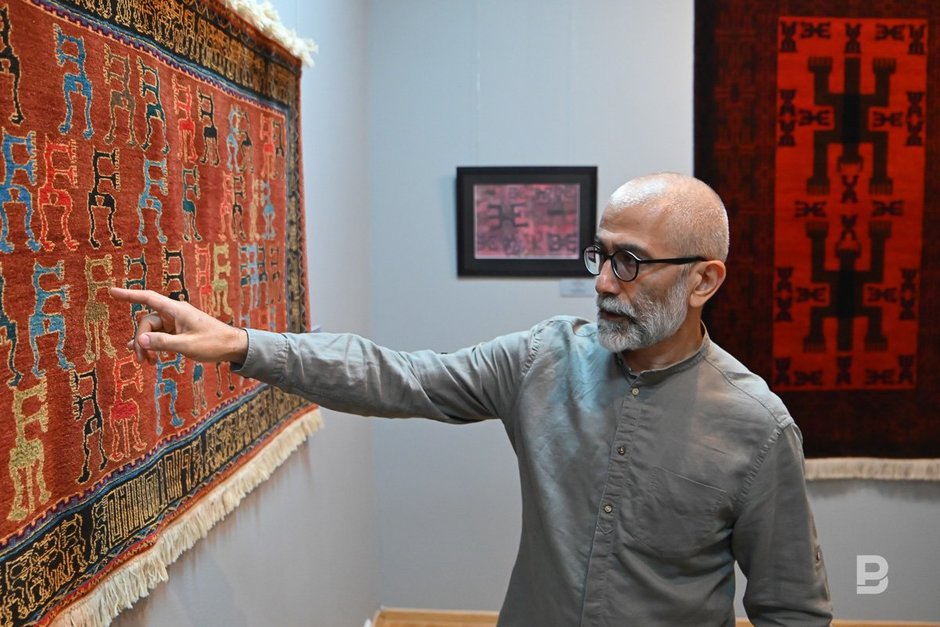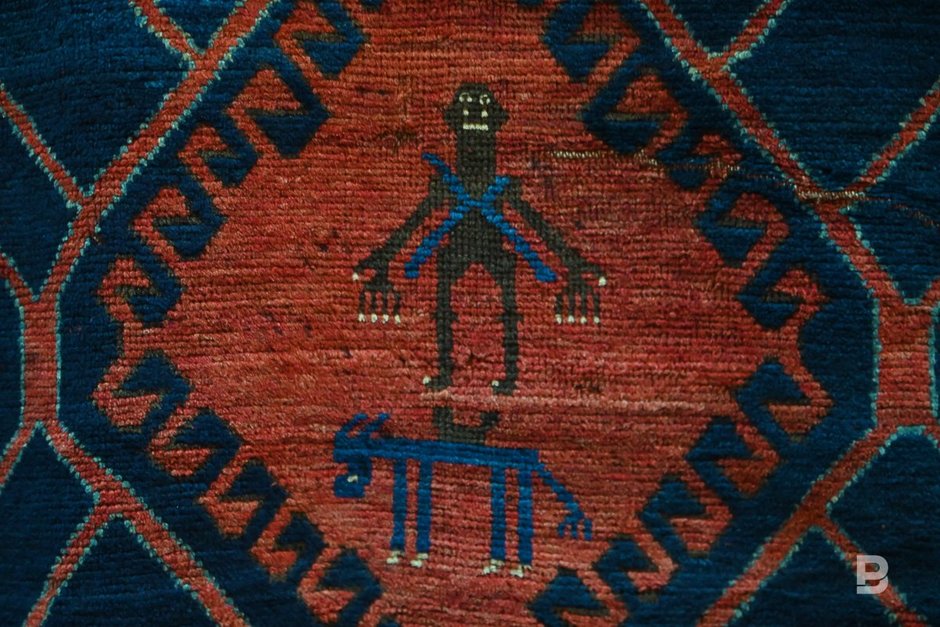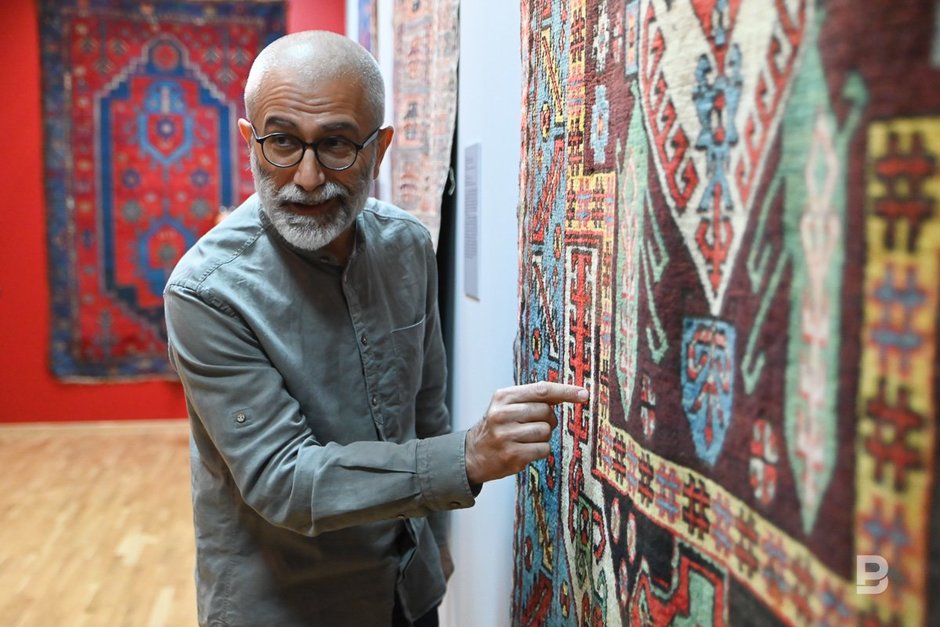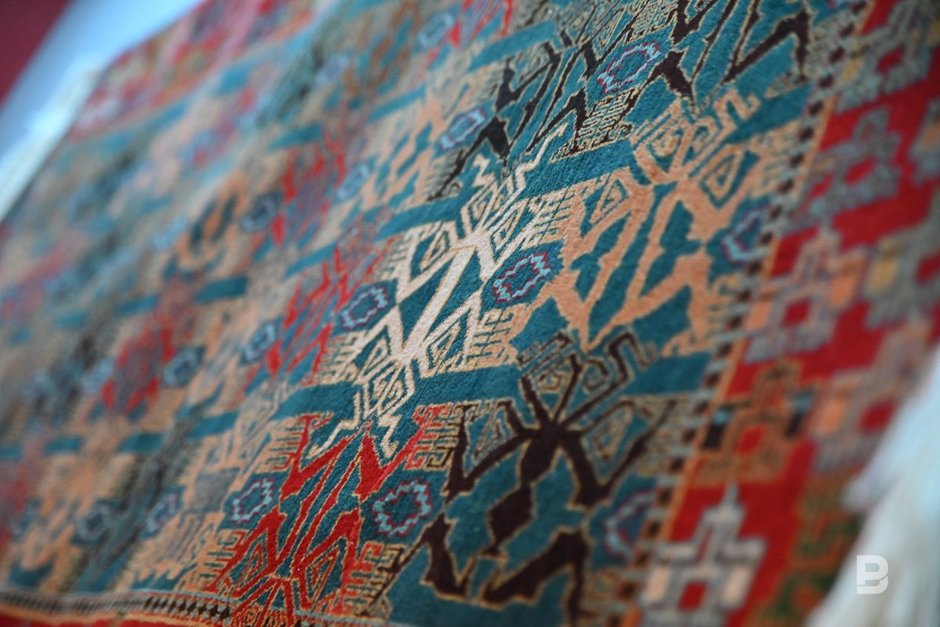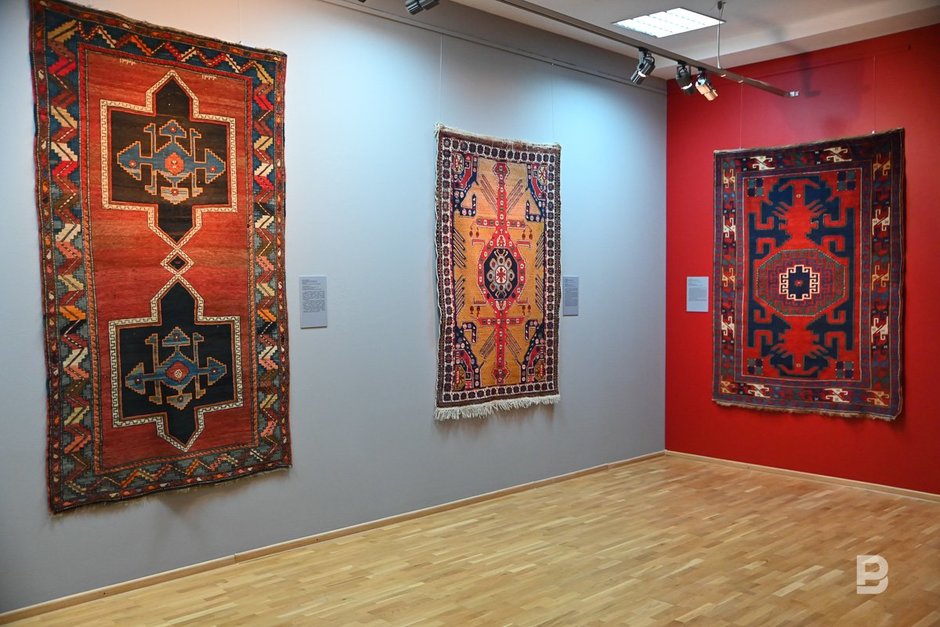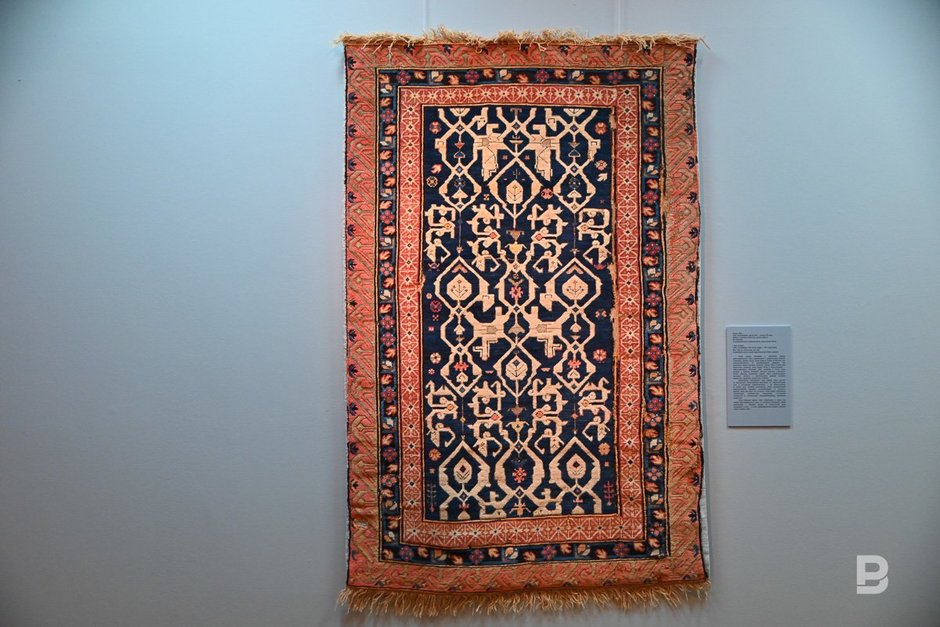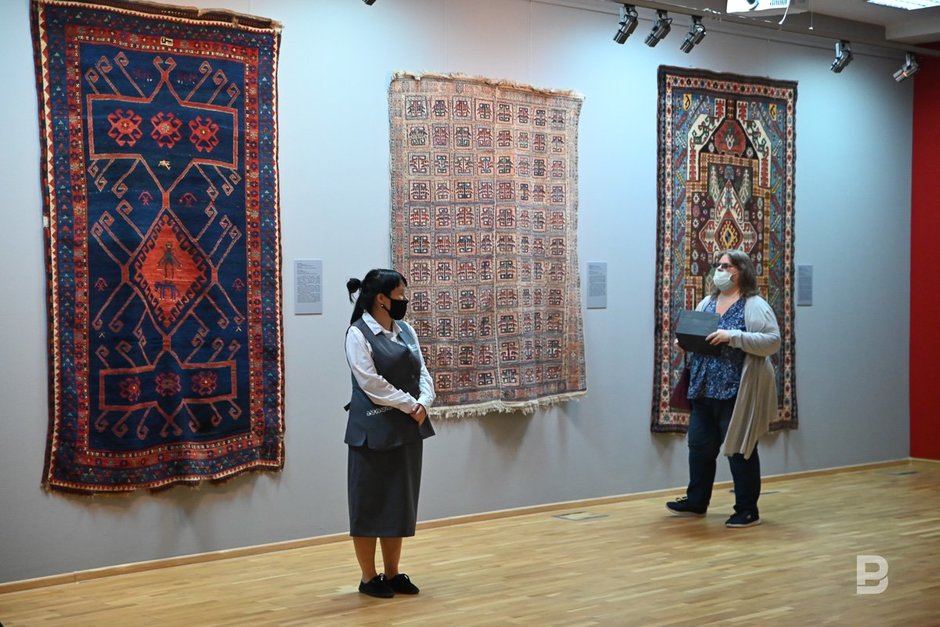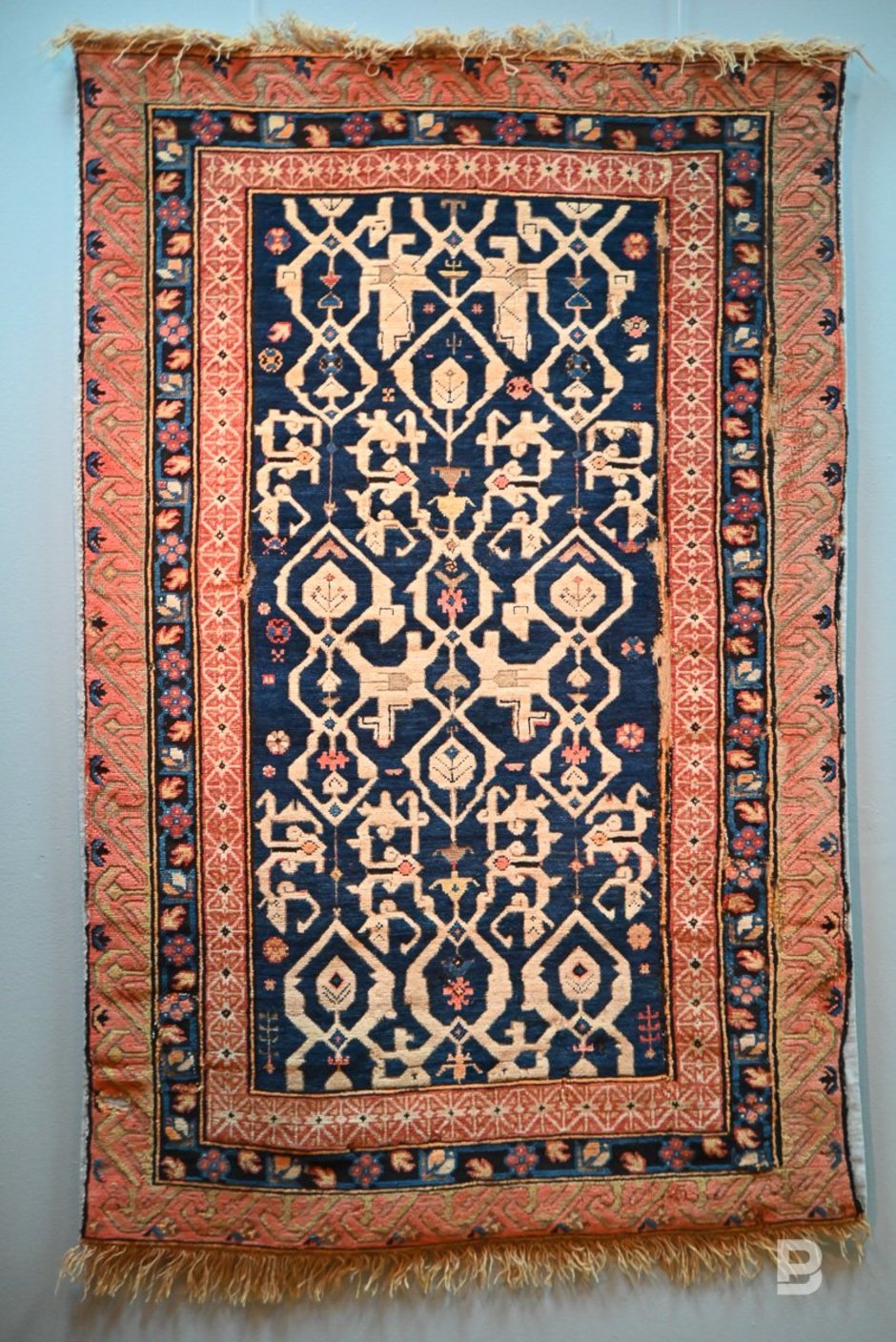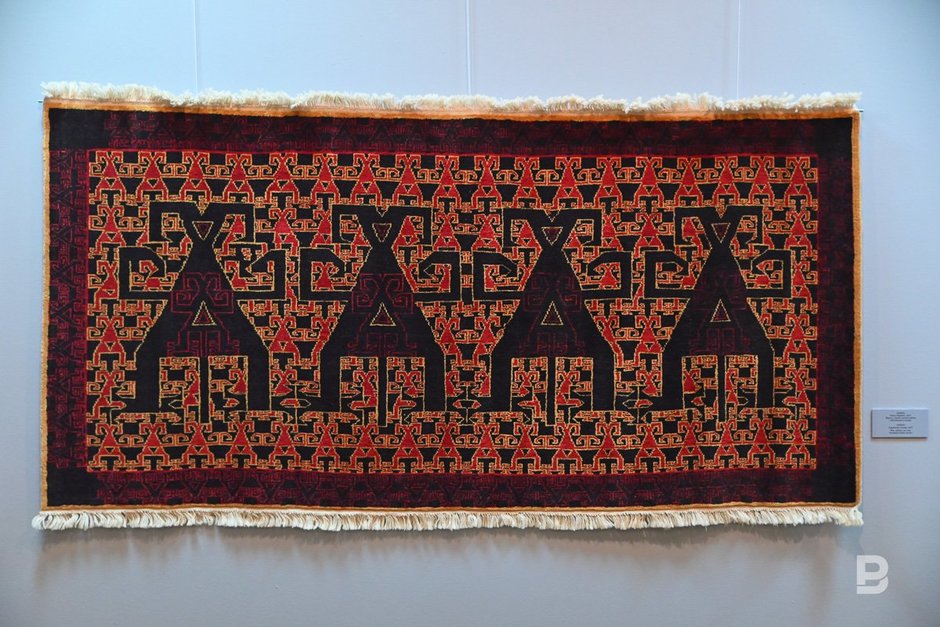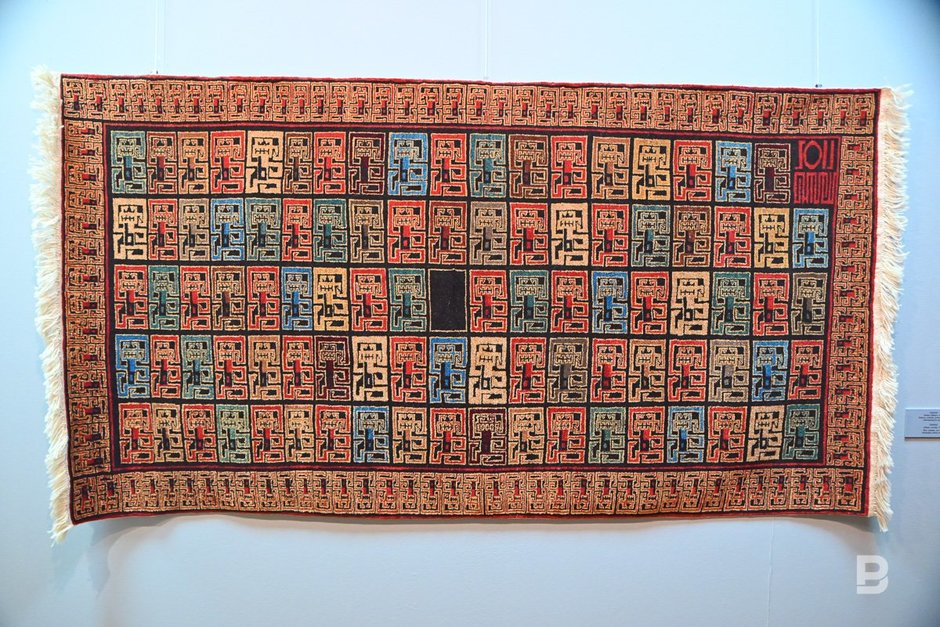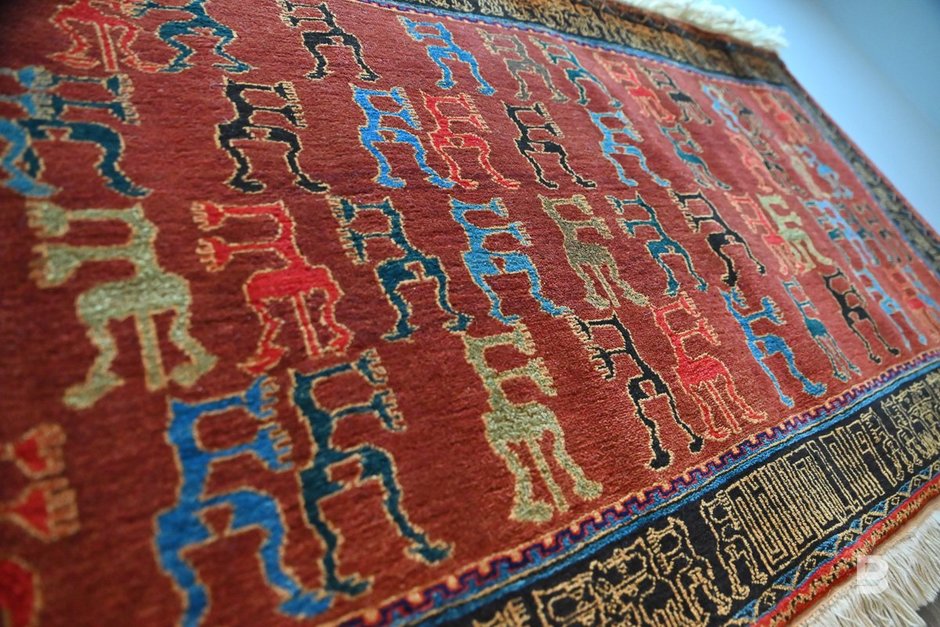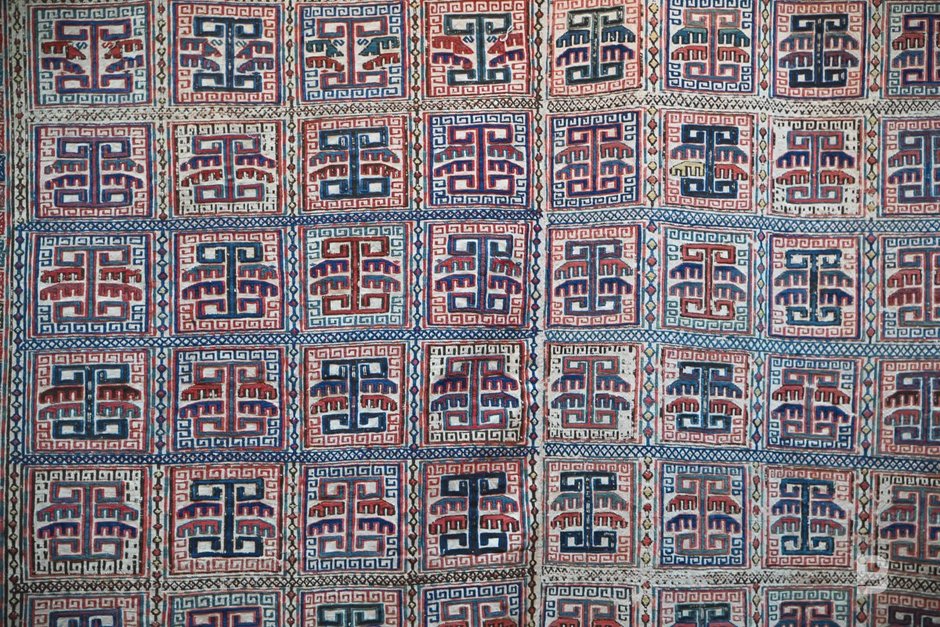Masterpieces of Azerbaijani carpet weaving to be shown to Kazan residents
Art of Carpet — Evolution of Meanings Exhibition opens in the capital of Tatarstan
The Art of Carpet — Evolution of Meanings Exhibition from the collection of the Azerbaijan National Carpet Museum opened in the Manege Exhibition Hall on 8 July. It presents both classic works of carpet art of the turn of the 19-20 centuries and modern author's carpets by Chingiz Babayev. The Azerbaijani sculptor, better known under the pseudonym CHINGIZ, also has brought to Kazan a documentary film about the philosophy of traditional carpet and its modern versions, as well as an unusual installation on the theme “Pure History”. How much the Azerbaijani carpet of two hundred years ago costs today, what a modern artist resists referring to the oldest art form, and what the Tatarstan minister of culture has to do with carpet weaving — read in the report of Realnoe Vremya.
Carpet as a source of inspiration
The Art of Carpet — Evolution of Meanings Exhibition was supposed to take place a year ago, the pandemic became an obstacle. But now that the carpets and their keepers from the world's first museum of this profile have reached Kazan, they will remain here for a long time, until September 5.
According to the director of the Azerbaijan National Carpet Museum, Shirin Melikova, the carpet is a symbol of the entire Turkic world, and carpet weaving is the oldest craft in Azerbaijan, which is equated with art:
“We consider the task of our museum to be the preservation of the works and traditions of Azerbaijani carpet weaving, so we purposefully buy our carpets abroad, return them, we can say, to our homeland. At the exhibition, we presented carpets from three regions of the country, each of which has its own ornaments, colours, and generic labels. We have divided the exhibition into two blocks. The first one presents traditional carpets from the collections of our museum, and the second one presents the works of a modern master, carpets created according to the sketches of our artist and sculptor Chingiz Babayev. This is for a reason — we tried to create a dialogue between the past and the future, to show how the traditional Azerbaijani carpet lives today, to indicate that it is not just a historical artifact, but also a source of inspiration for a modern creator.”
“All troubles are because of ignorance”
Indeed, Babayev's modern works are also based on the technologies and traditions of past centuries. Not only the ornament, but also the dyes, for example, are used the same ones that were used by ancient masters. As a rule, these are herbal and mineral components, as well as cochineal — a bug from which red paint is obtained.
“You look at synthetic modern carpets — they can be immediately distinguished by their colours: there are no too bright in nature. Besides, only natural tones created by nature itself can achieve a three-dimensional, almost three-dimensional image, as, for example, can be seen in my work 'Headless'," says Babayev.
Each carpet has its own name for the artist. He is sometimes reproached that they are all quite militant, like another work created jointly with the carpet museum in 2017 — 'Resistance'.
“What am I resisting? Ignorance! It is omnipresent, reigns now in everything. At the same time, 'ignorance' does not mean 'lack of education' at all. Rather, it is an unwillingness to learn something new. I am currently studying this phenomenon and I can firmly say that all our troubles are because of ignorance," Chingiz Babayev is sure.
By the way, the artist failed to bring his famous “Sufi” carpet to Kazan this time — like a couple of his other new works, it is unfinished so far. The artist himself does not consider himself a Sufi, but the theme of Sufism is very close to him. “But I can't just contemplate or love everything and everyone. Yes, I can't love every person or, for example, an animal that is biting me at the moment.”
In the centre of the second hall, dedicated to the works of the contemporary artist, there is the installation “Pure History”. According to the organisers, this is the key to all Babayev's works. A plain carpet of the color of natural wool, without any ornaments, is located on the wall, like the basis of the basics of tabula rasa (from the Latin “clean board”), as an appeal to eternity. Under it, there are many symbols of different eras that have “crumbled” over the past centuries…
An old price list and a gift of 100k euros
It is interesting that the master, creating sketches for new works of carpet art, did not try to weave carpets himself. “It's a very long process, it's like meditation," says the artist. He once asked the craftswomen what they were more interested in weaving — an author's carpet or some kind of work on the side, to which he received the following answer: “It doesn't matter to us. We take a job and it's like we're starting to meditate.” An interesting fact was also cited by Shirin Melikova:
“There is an interesting carpet of the 17th century in the museum's collection. It has verses in Farsi woven in the centre, and at the bottom, it is written in script: 'One egg costs 20 kopecks, bread costs 40 kopecks.' And all this is woven on the carpet. That is, the masters accepted everything that surrounded them, they captured all the information in their works.”
According to the director, the collection of the Baku Museum is constantly updated. Not only due to foreign auctions, but also with the help of expeditions to the hinterland. The carpets are brought to the museum by the Azerbaijanis themselves, they are given by patrons. So, for example, it turned out with the unique Karabakh carpet of the 18th century, the latest acquisition of the museum. Its cost exceeded 100,000 euros, the museum had been looking for a sponsor for a long time, but then a Baku philanthropist showed up, who presented this most valuable exhibit as a gift. On average, carpets, depending on their condition, the date of manufacture, the rarity of the ornament, cost from 10,000 euros and above, “to infinity”, as noted by Shirin Melikova.
“Carpet” manuscript
Looking at the exhibits, you understand that their cost is justified: there is a history behind each of them. Carpets, like people, have their own names. For example, the Karabakh carpet of the beginning of the 20th century is called “Zili”. This is one of the types of Azerbaijani lint-free carpets, which is distinguished by a fine finish with an ornament in the form of stylised birds and animals combined with abstract geometric motifs. By the way, you can see different birds on almost all the carpets — they were totems, guardians of the genus for different tribes. Then the carpet itself was a talisman.
Or the carpet “Khan”, the name of which goes back to the word “khoan”. Among the peoples of the Middle East, this means “tablecloth”, and this is an integral sign of a cheerful feast, a joyful event with family and friends. Often on carpets, in addition to birds, you can find images of a dragon, which has always been considered the lord of water, and therefore a symbol of fertility and wealth. However, to guess who is now in front of you — an animal that has turned into a geometric figure, a winding plant, or even a running person, only an expert who will “read” a whole novel on the carpet that fits on a couple of square metres will help.
Master of carpet weaving for the future minister
The director of the museum emphasised that the appearance of the carpet exhibition in Kazan is not accidental:
“Historically, our peoples are very close. Even before the revolution, Tatars and Azerbaijanis worked closely together in the State Duma. Gabdulla Tukay was a welcome guest in Azerbaijan, and the Mulla Nasreddin magazine, published in Baku in the 1920s, had many subscribers from Kazan.”
From an unexpected side, the topic of the relationship between the republics was revealed by Minister of Culture of Tatarstan Irada Ayupova:
“I couldn't help but visit this exhibition. Not only because the Carpet Museum is the only one in the world in this direction. And not only because carpet weaving is a craft that was peculiar to our land, but today it is considered lost in its original idea. Besides, this is a whole layer of intangible cultural heritage, which we are obliged to preserve. I was born in Baku myself. In my early childhood, Shirinat was our neighbour, who became my master in carpet weaving. As a child, I helped her weave carpets. Seeing how a work of art is being created before my eyes and with my participation, I understood that this is painstaking work, ornaments, colour combinations — all this is the result of very attentive, conscious, systematic work. I really want to believe that the attention to the preservation, including the intangible heritage, which is paid at the state level today, will become the business of each of us.”
